Difference Between Impact and Non-Impact Printer: 2024 Guide
A printer is a device used for translating information or computer output on paper. When considering the printing technology, the type of printer you use highly impacts your printing speed, quality, and efficiency.
Printers are generally categorized into two types: impact printer and non-impact printer. Each one has its own unique features, types, pros, and cons, making them suitable for various uses.
The major difference between an impact printer and non-impact printer is that impact uses electrochemical impact mechanisms to print the image, the latter doesn’t use any kind of mechanical impact device.
By identifying the differences between these two, it will be easier for you to choose the most suitable one to go for work.
So, hold your seat belts, and let’s get into this guide to learn more about impact printer and non-impact printer and how they differ from each other.
Table of Contents
What is an Impact Printer?
Impact printers are an umbrella term for printers that create an image on the substrate by physically touching it. These mechanical devices strike an ink ribbon against the paper to create the print (text or image).
This method is somewhat similar to how a typewriter works (it looks like a traditional printing method).
The key feature of impact printers is that they involve mechanical contact with the paper. This direct contact between the printhead and the paper is what differentiates it from its non-impact counterparts.
These types of printers are so noisy, yet popular. They are always ready to do heavy printing jobs like printing bulk orders for delivery notes, receipts, invoices, and continuous reports for accounting purposes.
People still use these printers because of their output print quality and versatility for printing on multiple substrates. They are commonly used in retail stores, offices, and warehouses where frequent documentation printing is required.
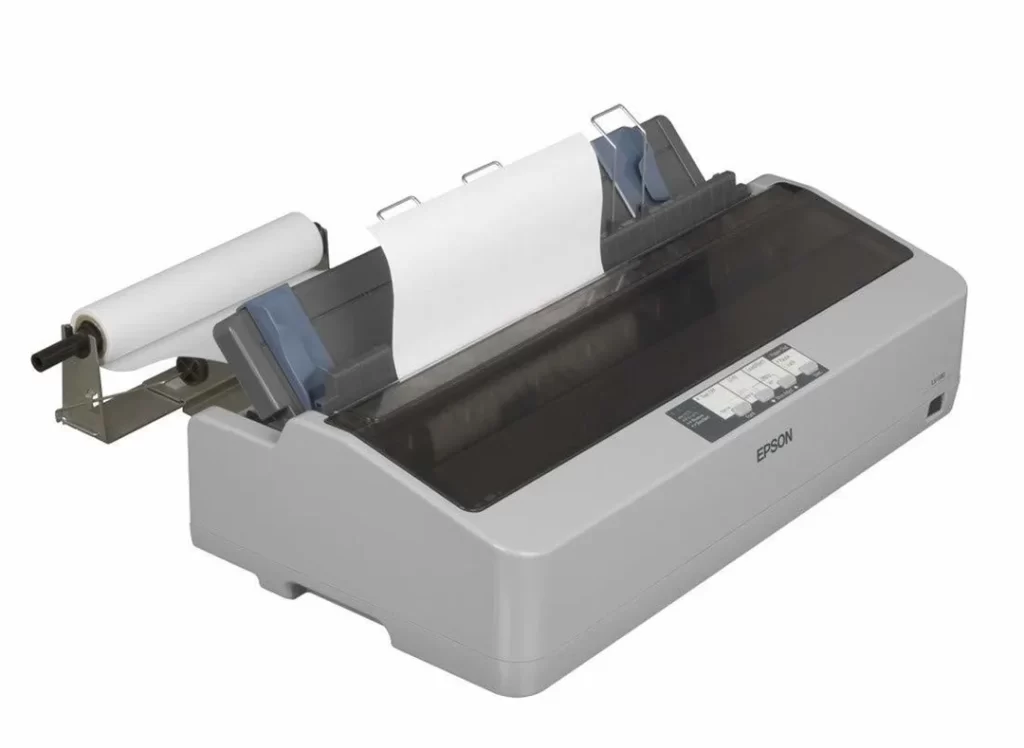
Types of Impact Printers
There are many impact printers out in the market. Each one hooked with its features works in its own unique way. Some of the famous types of impact printers are categorized here:
- Dot Matrix Printers
These printers use a matrix of pins (9, 18, or 24-pin) to create dots on the paper, forming characters and images. They are often used for generating multipart forms and receipts due to their ability to print on multiple layers of paper.
The printer uses a moving printhead that moves back and forth to strike an ink-soaked fabric ribbon against the paper. Each dot in printing is as important as fuel for a car to create an image or character.
These printers are best for small businesses to print receipts and bill forms that need carbon copies.
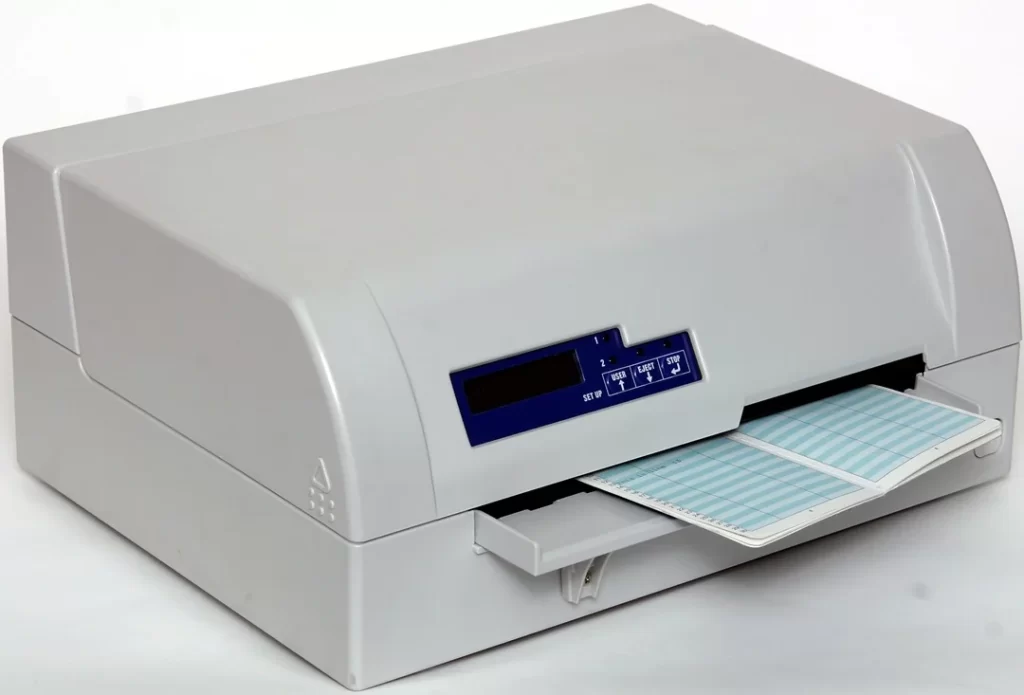
- Pros: Durable, prints on multi-part forms, cost-effective for bulk printing.
- Cons: Noisy, lower print quality compared to non-impact printers.
- Daisy Wheel Printers
These printers use a pre-formed wheel with all the characters required in the printed documents. The characters are engraved on a metal plate around the wheel spoke.
While printing the wheel turns at high speed and the electrochemical hammer strikes against the ribbon to print letters or numbers. Daisy Wheel printers are super fast for basic text but can’t print images or photos.
If you want to print graphics, you must replace the entire wheel with another wheel, carved with a different font style. This type of impact printer is mostly seen in legal settings to print clear documents, drafts, and contracts.
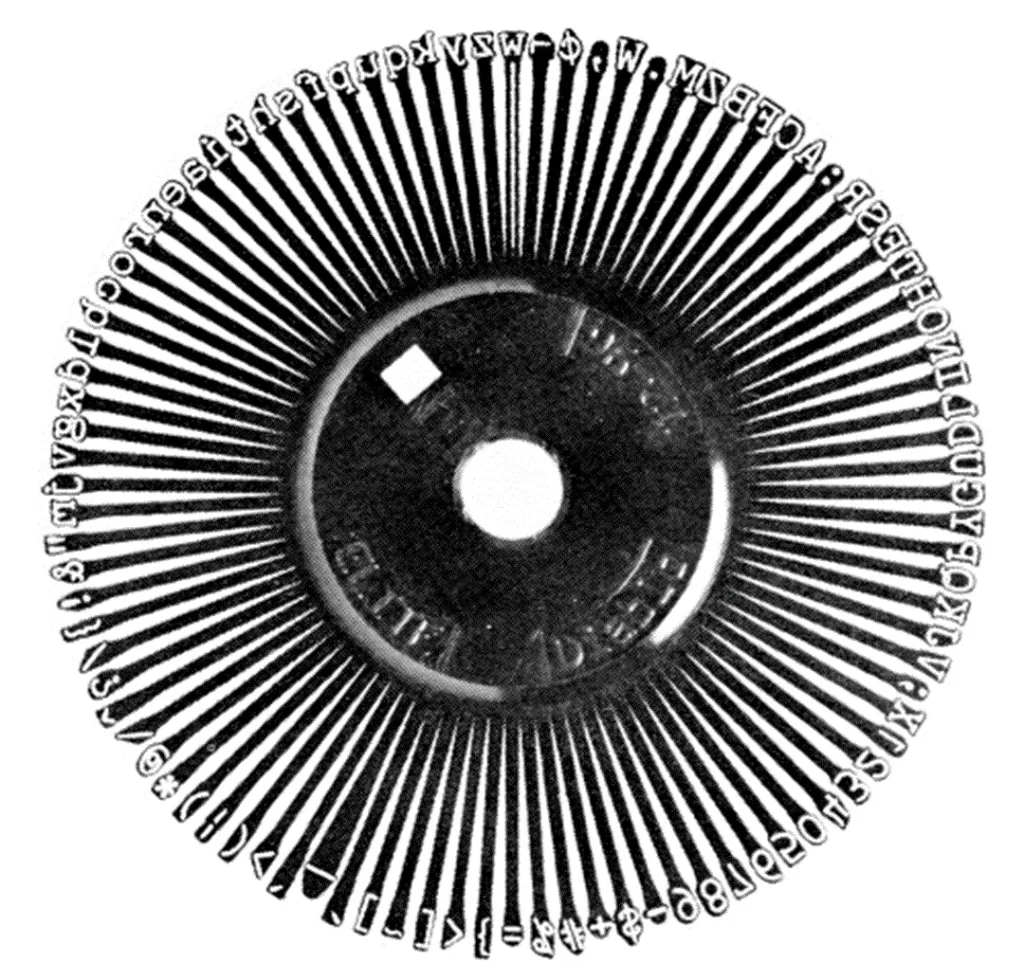
- Pros: High-quality text printing, especially for documents that require consistent font styles.
- Cons: Slow, limited to text-only printing, and can be noisy.
- Line Printers
Line printers print a full line of text at once. The printer uses a drum or chain mechanism with characters to transfer the text onto paper.
These printers were once used for high-volume printing tasks in large businesses. Now, they have been replaced with faster and more modern non-impact printers.
The most common line printers are of three types in the market. These are chain printers, brand printers, and drum printers.
- Pros: Super fast, ideal for large-scale printing needs.
- Cons: Typically used for text, not suitable for high-quality image printing.
What is a Non-Impact Printer?
On the other hand, non-impact printers do not involve any physical contact between the ink ribbon and the paper.
Instead, they use various methods such as heat, laser, inkjet, or electrostatic charges to transfer ink or toner onto the paper. A laser beam, a spray of special ink, heat, or pressure is used to print graphics or characters onto the substrate.
This technology is for quieter, faster, and more versatile printing. These printers work at high speed and can print many pages per minute. The printing is less noisy because there is no striking mechanism involved.
The print quality is also higher than impact printers. However, these printers are more expensive than impact printers but are best for home or office use.
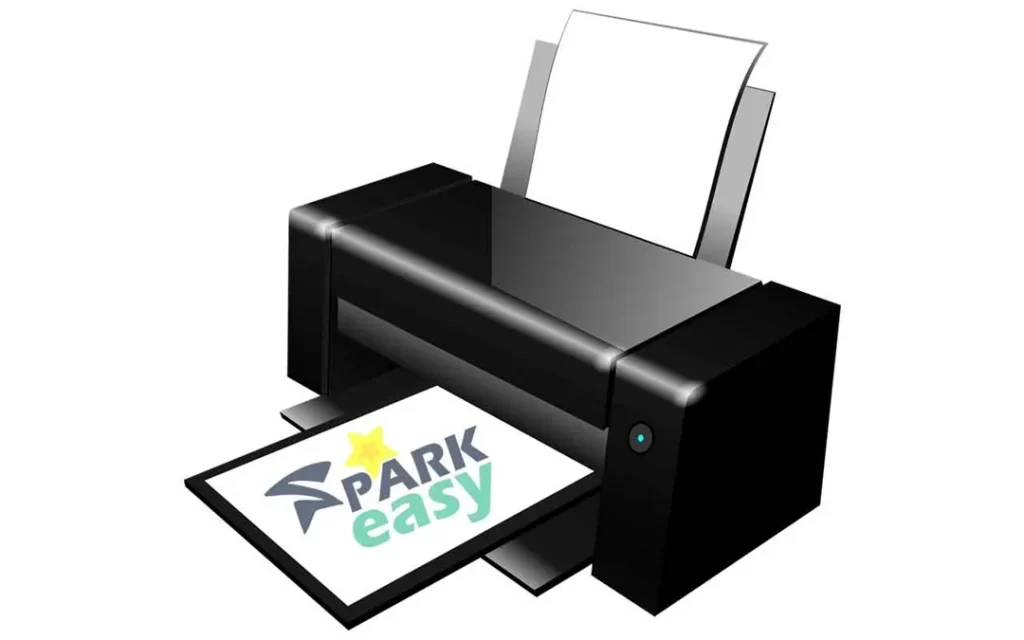
Types of Non-Impact Printers
There are several types of non-impact printers in the market. Some of the famous printers are the following:
- Inkjet Printers
These printers use tiny nozzles to spray ink droplets onto the paper, creating dots that form characters and images.
Several components of the printer work together to create the final print. These include a print head, RIP software, ink cartridges, a paper feed mechanism, and a printer’s control panel.
The resistive heating effect in the printhead heats each nozzle in microseconds. The ink expansion starts in the cartridges and nozzles — the magic turns onto the paper.
Inkjet printers like wide format plotter printers are widely used for home and office printing, as well as for professional photography and graphic design.
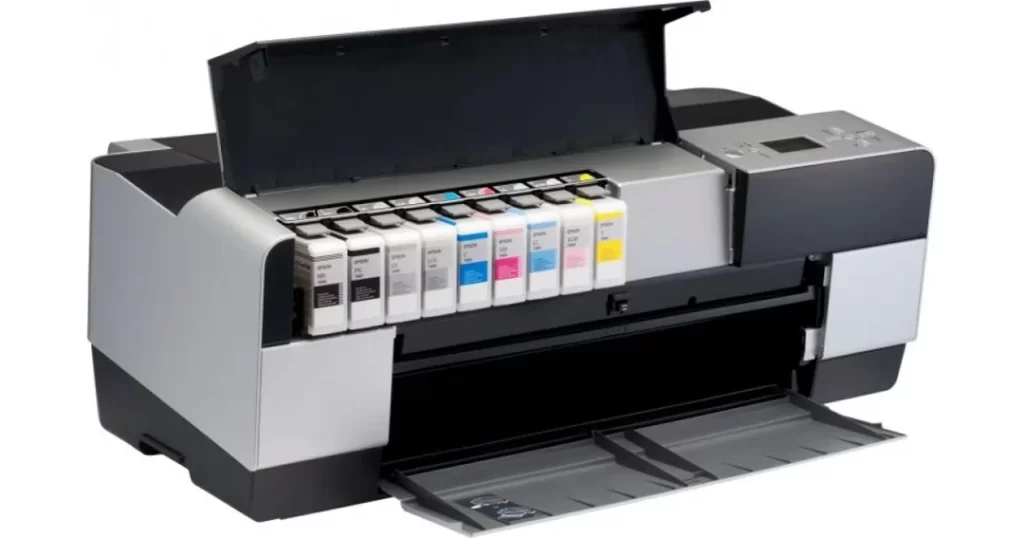
- Pros: Excellent print quality, especially for photos, quiet operation, versatility.
- Cons: Ink can be expensive, and prints are prone to smudging if improperly handled.
- Laser Printers
Laser printer machines use a laser beam to create an image on a photosensitive drum, which attracts toner particles. The toner (a fine powder) is then transferred to the paper and fused with heat.
You can see various components involved in the printing process such as lasers, photosensitive drums, toner particles, and heat. This combination lets you print sharp images and crisp text, making laser printing more popular.
Laser printers are known for their high print quality and speed.
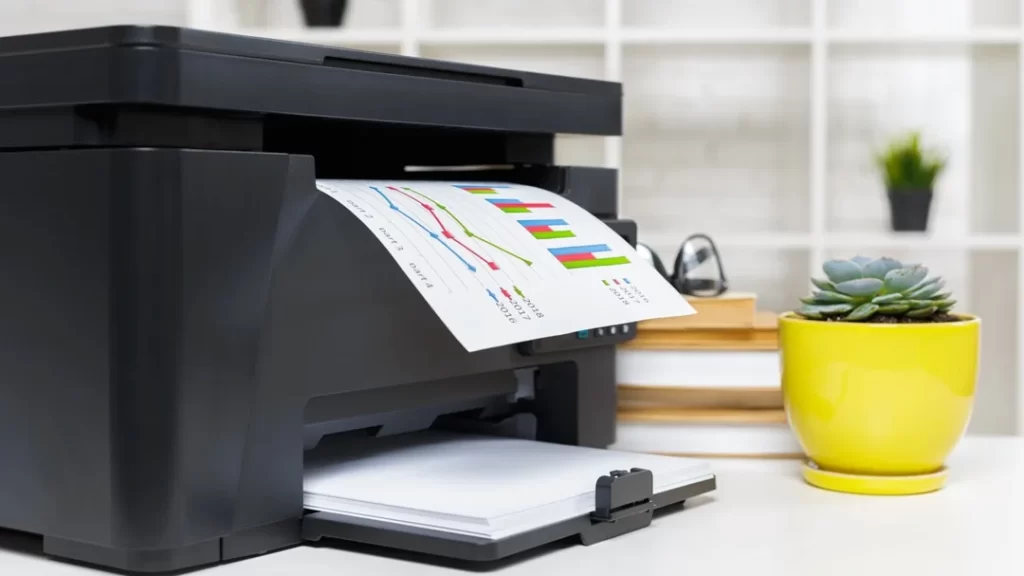
- Pros: Fast printing speed, high-quality text output, and cost-effectiveness for high-volume printing.
- Cons: Higher upfront cost, and limited color printing capabilities compared to inkjet printers.
- Thermal Printers
Thermal printers use heat to transfer an image onto paper. It forms darkened dots when the heated elements reach a threshold temperature.
Direct thermal printers use heat-sensitive paper, while thermal transfer printers use a ribbon. They’re often used for receipts, tickets, and small label printing.
The good thing about these printers is they require minimal printer maintenance and create no noise when working.
- Pros: Quiet, reliable, and commonly used for labels, receipts, and barcodes.
- Cons: Limited to specific types of print media, fade over time, especially in direct sunlight.
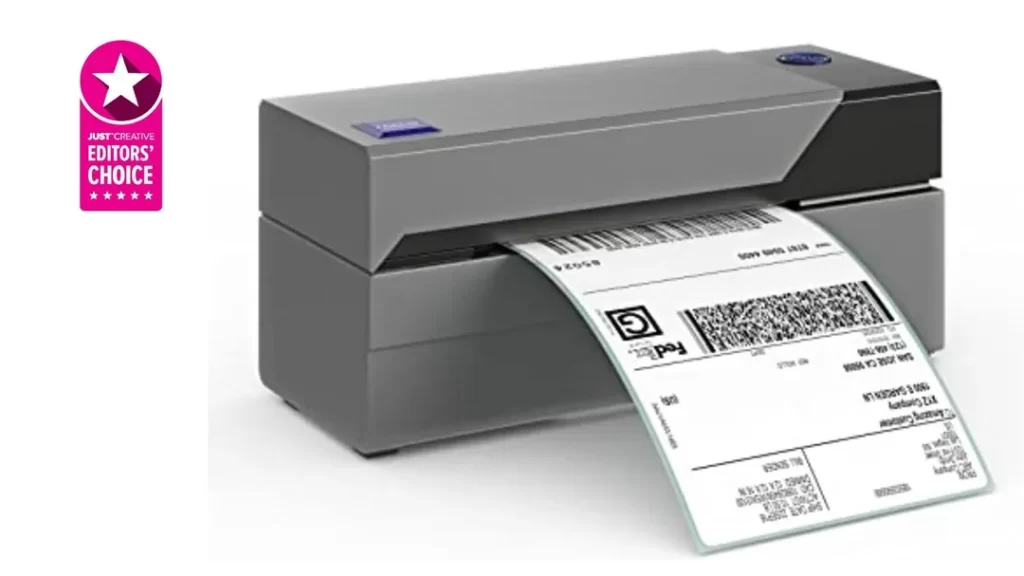
Key Differences Between Impact Printer and Non-Impact Printer
- Print Quality
Impact printers generally produce lower-quality text prints. The printed text is clear and crisp, making it perfect, for forms and document printing. Howers, impact printers don’t match the same vibrancy with graphics and images.
On the flip side, non-impact printers, particularly inkjet and laser printers can produce high-resolution prints of up to 1200 dpi (dots per inch) suitable for text and images. The results prints have fine detail and clarity.
- Noise Level
Impact printers are known for being noisy due to the mechanical action involved in the printing. When the ink ribbon strikes against the paper, it naturally generates a sound.
This sound is similar to the clicking of a typewriter’s key. This may be noticed in a quiet environment but is not a big issue in an industrial setting.
Non-impact printers are much quieter, making them more suitable for office environments. This is because these printers don’t have to physically contact the paper with a hammering device to create a print.
- Speed
Non-impact printers, especially laser printers, are typically faster than impact printers. These printers are well equipped with automatic double-sided printing and document feeders that further enhance the output speed.
However, line printers (a type of impact printer) can be incredibly fast for text-heavy documents.
- Cost
Impact printers are generally more affordable upfront and cheaper to maintain, making them a good choice for bulk printing tasks. Their affordable ink ribbons or carbon ribbons ensure it is a budget-friendly option.
Non-impact printers employ advanced printing technology to produce high-quality prints. They have higher initial costs, but their reliability, versatility, and print quality often justify the investment.
- Application
Impact printers are suitable for multi-part forms, receipts, and low-volume printing. They can print several copies at once, like carbon copies. This feature makes it best to create invoices, orders, and documents where duplicates are needed.
While, the non-impact printers are ideal for high-quality documents, graphics, and photo printing. They are widely used in homes and small businesses to take photos, documents, and more.
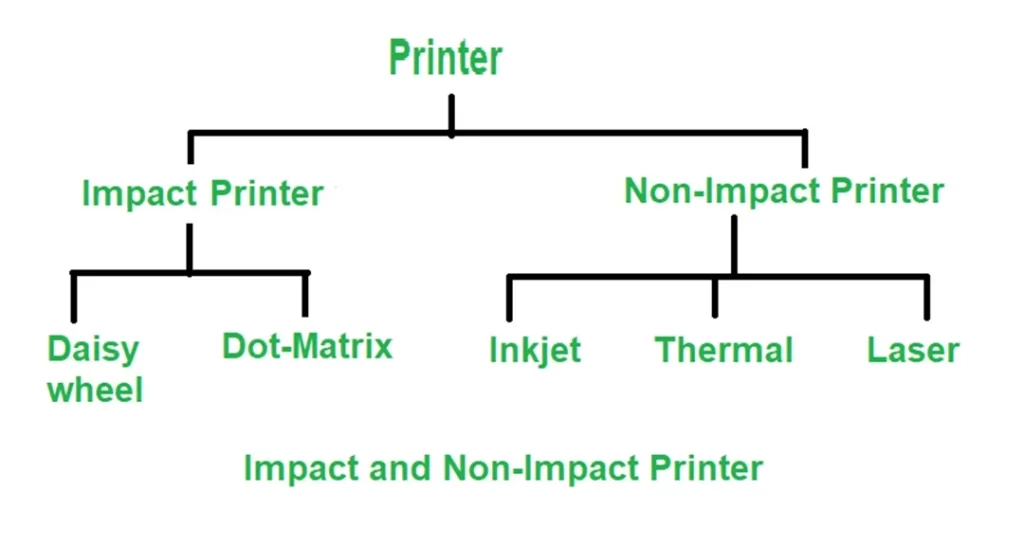
Conclusion
Choosing between an impact printer and a non-impact printer depends on your requirements. If you need a durable printer for high-volume text printing or for multi-copy forms, the impact printer will suit you.
However, if you value the quality of graphics or images, the flexibility, and the speed, a non-impact printer, including an inkjet or laser printer is more appropriate.
So, understanding the features, pros, and cons of each type of printer helps you make a wise choice on printing needs for both the present and the future.
